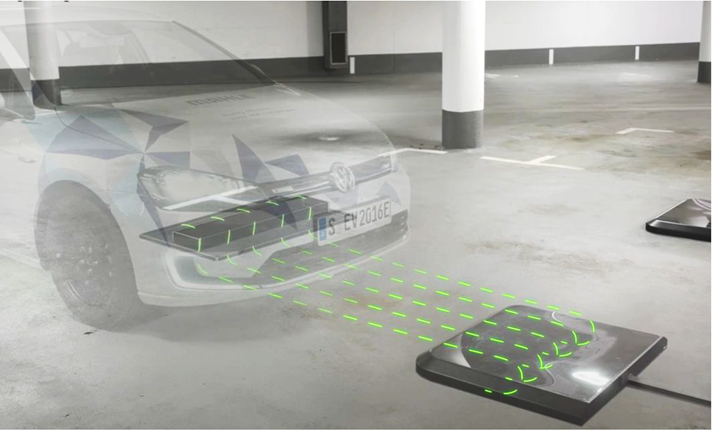In 2023, the electric vehicle (EV) industry is experiencing a transformative shift with the advent of wireless EV charging technology. Imagine pulling into your driveway or parking spot and having your EV automatically start charging without the need for cumbersome cables. This isn’t just a futuristic dream; it’s a reality that’s reshaping how we think about electric mobility. As the global push towards sustainable transportation intensifies, wireless EV charging is emerging as a key player, offering unprecedented convenience and efficiency. In this article, we will explore the current landscape of wireless EV charging, its benefits, and what the future holds for this revolutionary technology.
Understanding Wireless EV Charging: A Technological Breakthrough
How Wireless Charging Works
Wireless EV charging, also known as inductive charging, uses electromagnetic fields to transfer energy between a charging pad on the ground and a receiver on the vehicle. Here’s a simplified breakdown of the process:
- Installation: A charging pad is installed on the ground in parking spots or garages.
- Activation: When an EV equipped with a compatible receiver parks over the pad, charging is initiated automatically.
- Energy Transfer: The system uses resonant inductive coupling to transfer energy from the pad to the vehicle’s battery.
- Efficiency: Modern systems boast efficiencies of over 90%, making them highly competitive with traditional plug-in chargers.
Key Players and Developments
Several companies are spearheading the development of wireless EV charging technology:
- WiTricity: A pioneer in wireless power transfer, WiTricity has partnered with major automakers like Hyundai and Nissan to integrate their technology into future EV models.
- Plugless Power: Known for their aftermarket wireless charging systems, they offer solutions for popular EVs like the Tesla Model S.
- BMW: In 2021, BMW launched their inductive charging system for the 530e iPerformance, highlighting the growing interest among premium automakers.
The Benefits of Wireless EV Charging
Convenience and User Experience
The most obvious advantage of wireless EV charging is convenience. For EV owners, not having to connect and disconnect charging cables means:
- Time-saving: Simply park and charge without any extra steps.
- Weather-proof: No need to handle cables in adverse weather conditions.
- Accessible: Ideal for individuals with mobility challenges.
Efficiency and Performance
Wireless charging technology has evolved significantly, achieving impressive efficiency rates. According to a 2022 study published in CleanTechnica, the latest systems achieve up to 95% energy transfer efficiency, rivaling wired chargers. This efficiency ensures minimal energy loss and faster charging times.
Infrastructure and Deployment
The deployment of wireless charging infrastructure is gaining momentum. By 2023, several cities, including Oslo and Los Angeles, have initiated pilot programs to integrate wireless charging pads into public parking spaces. This move not only enhances urban mobility but also encourages wider adoption of EVs.
Challenges and Considerations
While wireless EV charging presents numerous benefits, there are challenges to consider:
Cost and Installation
- Initial Investment: The cost of installing wireless charging systems is currently higher than traditional plug-in chargers. However, economies of scale are expected to reduce prices as the technology becomes more widespread.
- Retrofit Compatibility: Not all existing EVs are compatible with wireless charging, requiring owners to invest in aftermarket solutions or wait for newer models.
Standardization and Interoperability
The lack of standardized protocols across brands can lead to compatibility issues. Industry stakeholders are actively working towards developing universal standards to ensure seamless integration across different makes and models.
Practical Guide: How to Get Started with Wireless EV Charging
If you’re interested in adopting wireless EV charging, here are some practical steps to consider:
- Research and Compare: Evaluate products from leading companies like WiTricity and Plugless Power. Look for systems compatible with your EV model.
- Consult with Professionals: Engage with certified installers to assess the feasibility of installing a wireless charging pad at your home or workplace.
- Consider Future-proofing: If purchasing a new EV, inquire about factory-installed wireless charging options, which may offer better integration and performance.
- Stay Informed: Keep up with industry news from sources like Electrek and InsideEVs to stay updated on the latest developments and offerings.
The Future of Wireless EV Charging
As we look towards the future, wireless EV charging is poised to revolutionize the EV landscape further. With advancements in technology and infrastructure, we can anticipate:
- Wider Adoption: As costs decrease and efficiency improves, more EV owners are likely to adopt wireless charging solutions.
- Smart Integration: Future systems may integrate with smart grids, optimizing energy use based on demand and reducing overall carbon footprints.
- Urban Mobility Solutions: Public spaces equipped with wireless chargers will enhance the convenience of EVs in city environments, reducing range anxiety and promoting sustainable urban transport.
Conclusion
Wireless EV charging is not just a technological advancement; it’s a paradigm shift in how we approach electric mobility. By offering unparalleled convenience and efficiency, it addresses some of the key barriers to EV adoption. As this technology continues to evolve, it holds the promise of making electric vehicles an even more attractive option for consumers worldwide. Are you ready to embrace the future of effortless charging? Share your thoughts and experiences with us, and let’s drive towards a more sustainable tomorrow.

